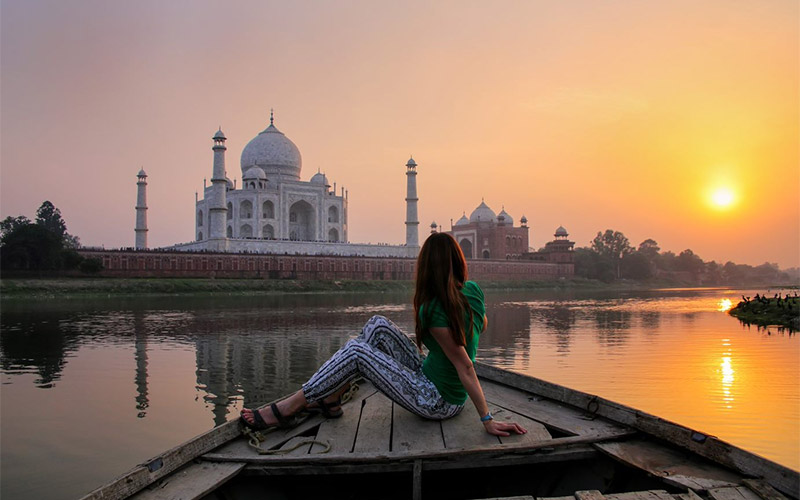A journey to the enchanting Taj Mahal is a voyage back in time, a rendezvous with exquisite architecture, and a tribute to undying love. This article serves as your ultimate guide, offering insights into the intricacies of planning a Tour to Taj Mahal, the historical significance it carries, and the unparalleled experience that awaits you.
Tour to Taj Mahal: A Glimpse into India's Heritage
The very phrase "Tour to Taj Mahal" evokes an image of splendor, opulence, and romance. This monumental ivory-white marble mausoleum, situated in Agra, India, was commissioned in 1632 by the Mughal emperor Shah Jahan as a memorial for his beloved wife Mumtaz Mahal.
The Magnificent Monument: Architecture and Design
Walking through the colossal gate, you'll be entranced by the Taj Mahal's symmetrical beauty. The main structure stands on a raised platform, reflecting the Mughal architectural style, a fusion of Persian, Islamic, and Indian influences. The central dome, flanked by four minarets, is a marvel of precision and balance.
The Symbolism of Love: Story Behind the Taj Mahal
Delve into the captivating narrative that enshrouds the Taj Mahal—a tale of love and loss that inspired its creation. The Mughal emperor Shah Jahan's unwavering devotion to Mumtaz Mahal is etched into every delicate marble carving and inlay.
Planning Your Visit: Practical Tips and Advice
Best Time to Visit:
Discover the optimal seasons for your Tour to Taj Mahal. The months of October to March offer pleasant weather, while the early morning hours provide an enchanting view of the monument in the soft sunlight.
Entry and Tickets:
Learn about entry fees, ticket options, and guided tours. Booking your tickets online can save you time and ensure a seamless experience upon arrival.
Dress Code and Etiquette:
Respect the cultural significance of the monument by adhering to the appropriate dress code—modest attire that covers shoulders and knees. Remove your footwear before entering the main mausoleum.
Photography and Preservation:
Capture the beauty of Taj Mahal with your camera, but remember to abide by the no-tripod rule. Join the efforts to preserve this UNESCO World Heritage Site by refraining from touching the delicate marble surfaces.
Exploring the Taj Complex: Beyond the Main Mausoleum
The Beautiful Gardens:
Stroll through the Persian-style charbagh, or "four gardens," layout—a lush paradise of symmetry and fragrant flowers. The gardens symbolize the four flowing rivers of paradise mentioned in Islamic texts.
The Intricate Inlays:
Marvel at the intricate details of the marble inlays, showcasing precious and semi-precious stones. The pietra dura technique brings forth mesmerizing floral and geometric patterns.
The Mosque and the Guest House:
Discover the red sandstone mosque and the exquisite guest house on either side of the Taj Mahal. These structures complement the mausoleum and add to the architectural splendor.
Unveiling the Nighttime Charm: Full Moon Tours
Experience the ethereal beauty of the Taj Mahal under the shimmering light of the full moon. Nighttime tours, available during two days before and after the full moon, offer a unique perspective of this iconic monument.
Nearby Attractions: Enhancing Your Experience
Agra Fort:
Extend your journey by exploring the historic Agra Fort, a UNESCO World Heritage Site. This red sandstone fortress showcases the grandeur of Mughal architecture and provides panoramic views of the Taj Mahal.
Fatehpur Sikri:
Venture to Fatehpur Sikri, a ghost city filled with architectural marvels. The intricate craftsmanship and well-preserved structures narrate the history of the Mughal dynasty.
Local Cuisine and Shopping:
Savor the flavors of Agra's delectable cuisine, including petha (sweet) and chaat (savory snacks). Don't miss the opportunity to shop for handicrafts, marble souvenirs, and exquisite jewelry.
Frequently Asked Questions
Can I visit the Taj Mahal year-round?
Yes, the Taj Mahal is open throughout the year, but the best time to visit is from October to March when the weather is pleasant.
